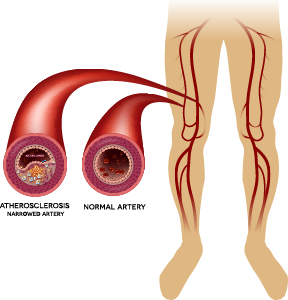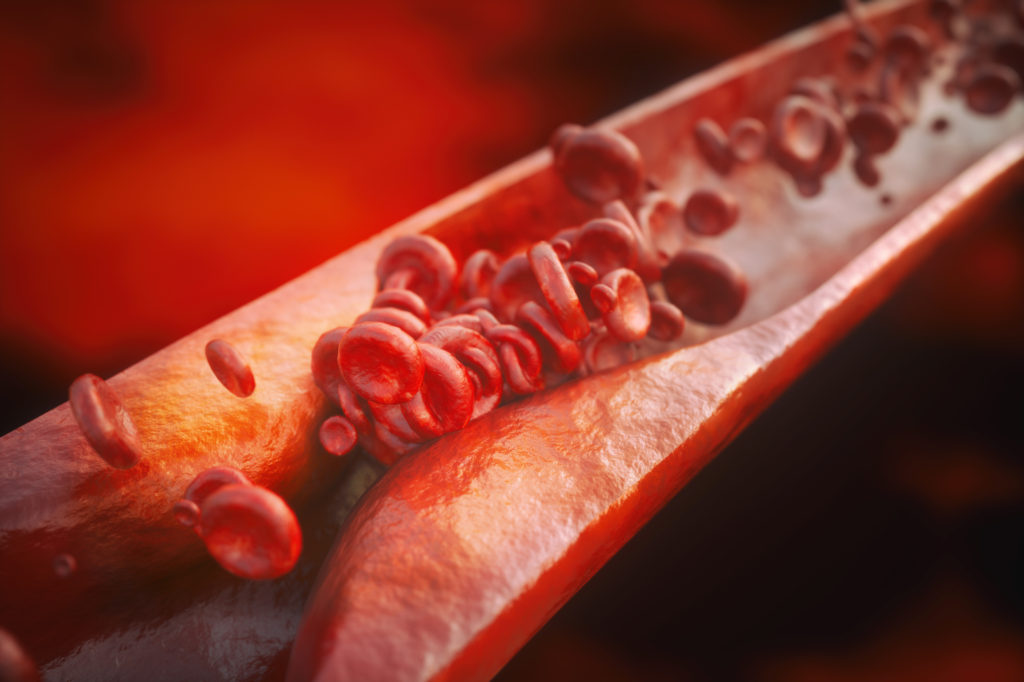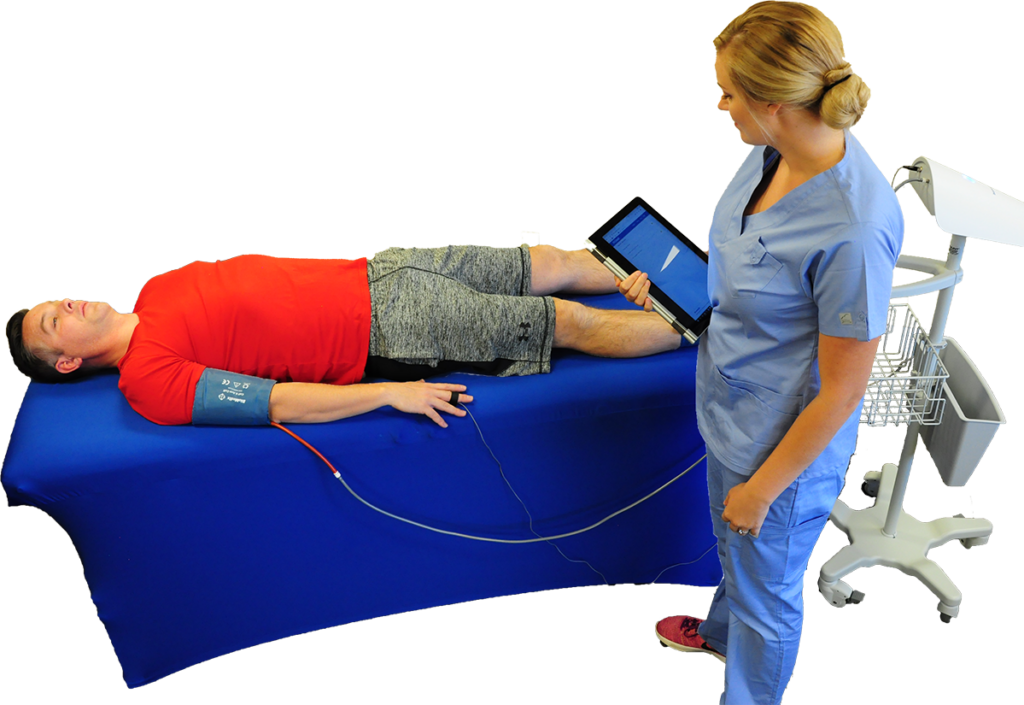The signs of PAD
PAD is a progressive and deadly chronic condition, which left untreated, can lead to adverse patient outcomes. Discussing potential PAD symptoms with patients, and testing for PAD at the point-of-care is one of the best strategies to enable the widest range of PAD treatment options for patients, improving outcomes and lowering healthcare costs.
PAD Starts With Atherosclerosis
Atherosclerosis is the result of the accumulation of fibrous and lipid materials in the arterial walls. These materials are sometimes referred to as plaque or calcium deposits, and result in decreased blood flow. If this decreased blood flow, or arterial insufficiency, is experienced in the lower extremities, it is referred to as peripheral artery disease (PAD), sometimes as peripheral vascular disease (PVD), and sometimes as peripheral arterial occlusive disease (PAOD).

Typical First PAD Symptom - Claudication
Oftentimes atherosclerosis progresses to PAD resulting in atypical symptoms, where a patient suffering from poor circulation due to atherosclerosis would be asymptomatic. If the PAD is not treated at this stage, the typical progression of the disease results in the patient experiencing intermittent claudication. Claudication is when a patient has exertional pain in the legs while walking, which is relieved at rest. Intermittent claudication is typically thought of as the first classic symptom of PAD.

Critical Limb Ischemia
As PAD progresses, the leg pain caused by poor circulation can result in a more advanced symptom of resting leg pain. This stage of PAD is oftentimes referred to as Critical Limb Ischemia (CLI), or Critical Limb Threatening Ischemia (CLTI). This pain typically manifests in the feet first, and more often at night, because leg elevation decreases blood flow.

Ulceration
To ensure proper healing potential from lower extremity wounds, your body needs a supply of oxygenated blood. If circulation to the legs is compromised then cuts and other lesions may be slow to heal, a common sign of PAD. These slow-healing wounds are more susceptible to infection.

PAD Testing

Get more info on PAD symptoms from Biomedix
Biomedix offers a wide range of tools and services to help you identify patients in need of PAD testing, they include:
- Patient questionnaires
- PAD posters
- Chart Review services
- Super Bill
- PADnet® scheduling form
These are designed to optimize your patient outcomes, while supporting reimbursement.